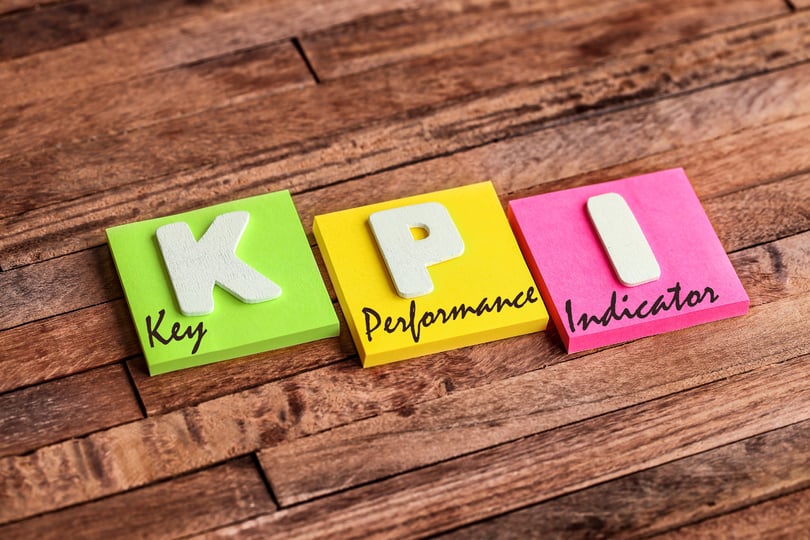5 KPIs You Need to Track for Multifamily Property Management

Multifamily property management businesses face an enormous challenge when it comes to achieving and maintaining success. As noted in a U.S. News article on housing market trends for 2019:
“Renters benefit from declining rental demand. The U.S. Census Bureau reports the nationwide homeownership rate is 64.4 percent as of the third quarter of 2018, a consistent increase since homeownership rates reached 50-year lows – below 63 percent – in 2016.”
While this is good for renters, this means that residential property management companies are having to compete harder for a smaller pool of renters. To be successful in the long term, it is important for multifamily property management companies to track their key performance metrics/indicators (KPMs/KPIs) and use that data to benchmark themselves against their competition—as well as to avoid overspending the residential property management budget on activities that will not provide a worthwhile return on investment.
But, which multifamily performance metrics should property managers track? Which metrics have the most relevance to multifamily properties?
Here’s a short list of some of the most important multifamily property management performance metrics to track:
Multifamily Performance Metric #1: Average Renter Lifetime Value
Renter lifetime value is a performance metric that tracks how much a property manager can expect to generate in revenue for a new renter. This metric helps contextualize the value of each renter (on average) to the business.
The average lifetime value of renters in multifamily properties is actually a composite of several different metrics, including:
- Revenue Per Unit. A compilation of all annual fees (including lease fees, application fees, renewal fees, etc.) for all managed multifamily units. The total can be divided by the number of units to get an average of the revenue per unit.
- Average Months Managed. A measure of the average term of occupancy for all units. Can be calculated by adding up the total lease period of all customers and dividing by the number of units rented.
Dividing the revenue per unit by 12 should generate a monthly unit revenue value. Then, this can be multiplied by the average months managed to establish an average renter lifetime value.
For example, say that ABC Multifamily Property Management operates 120 occupied units. Their total yearly revenue is $4,320,000, for an average of $36,000 per unit per year (4,320,000 / 120 = 36,000), or $3,000 per unit per month (36,000 / 12 = 3,000). If each renter stayed on their lease for an average of 18 months, their lifetime value would be $54,000 (3,000 x 18 = 54,000).
Naturally, this is an average, so some renters may be worth more or less. This number can be impacted by improving renter retention rates (reducing churn) or by modifying lease values. Knowing the average lifetime value of renters helps property management companies optimize their spending on efforts to fill their multifamily properties.
Multifamily Performance Metric #2: Renter Churn Rate
How often do renters decide to cancel their leases—especially when they choose to terminate early? Renter churn rate has an enormous impact on multifamily property management companies because it directly impacts their yearly revenue and expenses for filling vacancies.
The average churn rate is fairly easy to calculate—simply take the total number of renters for the year and use that to divide the number of renters who cancelled their leases. For example, if ABC Multifamily Property Management had 120 renters at the start of the year, and 18 cancelled their leases, then their churn rate would be 15% (18 / 120 = 0.15).
Beyond simply tracking churn rate, it’s important to investigate the reasons behind the churn. While some renter attrition is inevitable, preventable attrition should be avoided. This is where having an “exit survey” or review from the renter can help—though not all renters will want to fill this out. It is especially important to investigate any lease cancellations that occur outside of the normal lease end period, as these may be the result of a major issue that will cause high renter churn.
Being involved with renters and maintaining regular communication—especially to listen to complaints—may be the best way to understand the reasons why renters are leaving.
Multifamily Performance Metric #3: Average Days-to-Lease
This is a performance metric that measures the time a unit spends vacant after the previous renter moves out. The longer multifamily properties are vacant, the more money they lose. Even though the apartment (or condo) is empty, it still needs regular maintenance, payment of taxes, and expenses for advertising the vacancy.
Tracking average days-to-lease for multifamily properties is incredibly important for assessing the effectiveness of marketing efforts and balancing the cost of filling a unit against the lifetime value of a tenant. In extreme cases, it can help identify deadweight properties that take longer to fill—though this is a more difficult issue for multifamily properties than it is for single-family residences.
If multiple units in a multifamily property are experiencing abnormally long delays between being put on the market and becoming occupied, it could be an indication of other issues, such as:
- A decline in local market conditions;
- The property not being marketed effectively to renters in the area; and
- The property not meeting local renter’s expectations or wants.
It may help to benchmark the unit against similar multifamily units in the area to see what amenities are in demand and the average rent such units go for.
If enough units in a multifamily property are vacant, it may be necessary to offload the property and invest elsewhere.
Multifamily Performance Metric #4: Annual Repair and Maintenance Costs
Every property needs regular maintenance—plumbing, electrical, HVAC, and general cleanup are all common requirements. Sometimes, more drastic repairs are needed to repair major issues (which become more common as routine maintenance falls behind schedule). Multifamily property management companies need to track these expenses and add them to their yearly operating costs to verify that they’re operating in the “black” instead of the “red.”
For multifamily units, work orders for maintenance tend to be more frequent than single-family properties because the renters expect the property management company to handle all aspects of maintenance. Basically, if a lightbulb goes out, a renter in a single-family home might replace it themselves, but a renter in a multifamily unit (such as an apartment) will call their landlord to replace it.
Multifamily property management companies may choose to utilize in-house maintenance techs to handle common maintenance tasks (such as replacing the aforementioned light bulbs), while using outsourced specialists for jobs requiring a licensed expert. The annual repair and maintenance cost performance metric would be a total of the salary paid to in-house staff, material expenses, and contracted property maintenance service costs. This total could then be divided by the number of units in operation to create a per unit repair and maintenance cost metric.
Multifamily Performance Metric #5: Occupancy Rates
What percentage of units managed by the multifamily property management company are currently occupied? Tracking occupancy rates is every bit as important for multifamily properties as it is for single-family and commercial properties. Vacant properties represent a drain on the company’s resources.
High occupancy rates are a good sign that the property management company’s efforts are working to improve renter retention and to attract new renters quickly when vacancies occur. Low occupancy rates may be indicative of a problem with renter turnover and attraction.
For some multifamily property managers, it might be worthwhile to check the occupancy rates of individual buildings. For example, if ABC Multifamily Property Management has multifamily units in three different buildings, one at 100% occupancy, one at 90% occupancy, and one at 50% occupancy, there might be an issue with the third building. Comparing the state of each building and the local market conditions for each can help multifamily property management companies identify issues which might be holding the third building from achieving full occupancy.
These are just a few of the multifamily performance metrics that property managers should track. While many of these metrics overlap with those used by single-family or even commercial property managers, the way in which multifamily property managers use them will be a bit different.
If you have any questions about this post, or want to learn more about property maintenance and how to manage it, please reach out to the HOMEE team today.





